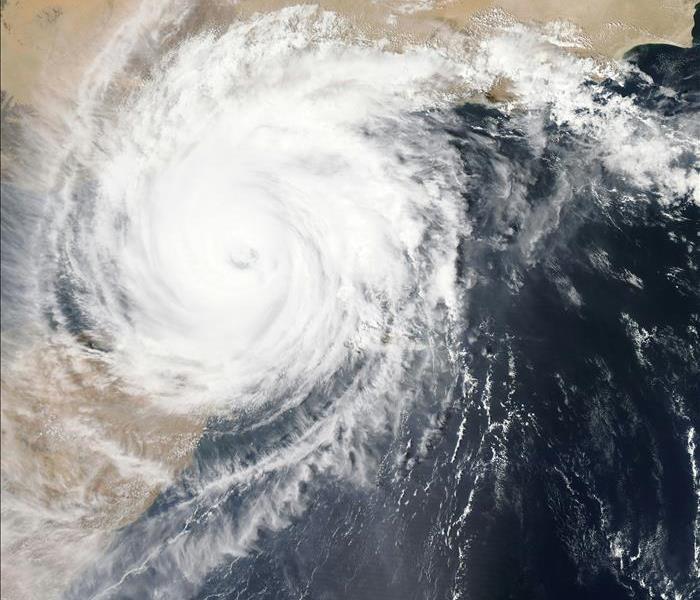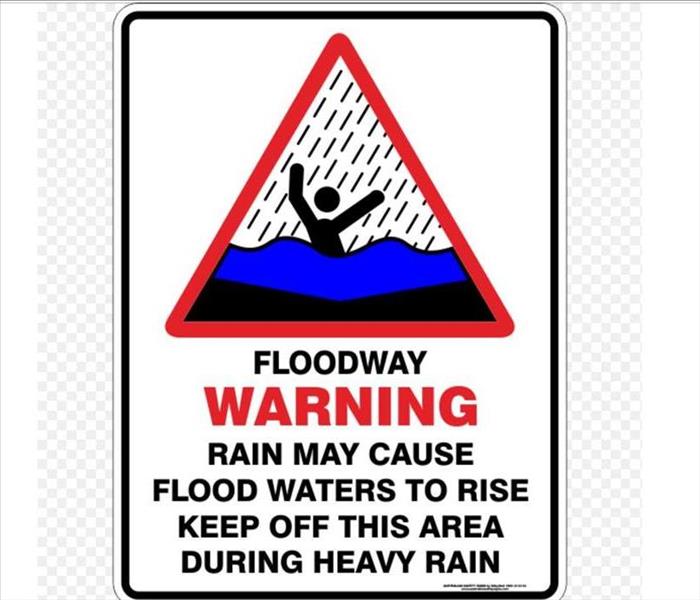Recent Storm Damage Posts
The Importance of Flood Insurance for your Upper East Side home or business
8/17/2024 (Permalink)
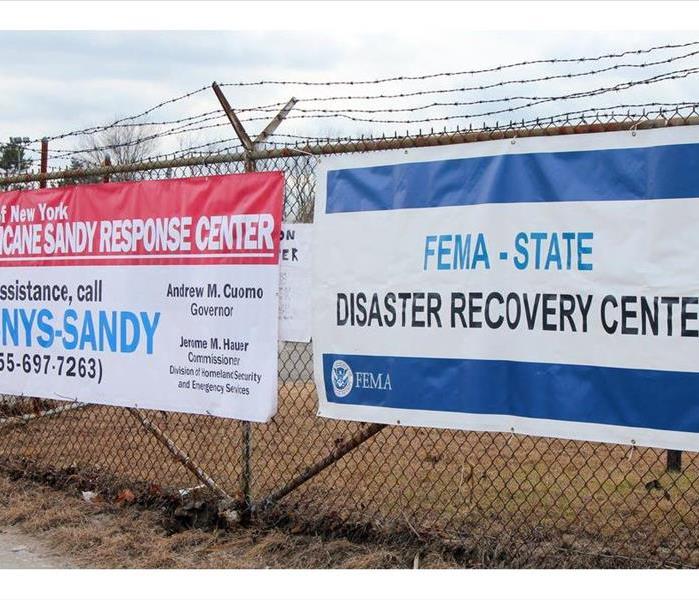 Check your policy to see if you are covered for Flood Damage.
Check your policy to see if you are covered for Flood Damage.
The people of New York City didn't give much thought to Flood Insurance before Hurricane Sandy hit, but the storm proved how devastating the damage to structures can be from coastal flooding. Home Insurance polices cover other types of natural disasters, such as tornado's and lightning strikes, but flood damage is excluded. Flood Insurance, is a separate policy that you pay extra and in most cases you must specifically state that you want that additional coverage.
When to purchase Flood Insurance
If you live in a high-rise, you can safely skip flood insurance. Otherwise, flood insurance is highly advised, if it's not already required. If you live in a FEMA-defined floorplan or if you have a federally funded mortgage that sits in a high-risk flood area, you will be required to have flood insurance. Even if none of the above apply to you, you may still want to purchase a flood insurance policy. The first thing you should do is find out if you are at risk, by visiting FEMA, https://www.fema.gov/ to find out if you live in a flood zone. Even if it's determined that your risk is small, you still may want to protect your investment.
Why to Purchase Flood Insurance
If your home or business suffers a flood, the damage can be extensive and extremely costly. Just 1" of water, can cause $25K in damages. Having flood insurance ensures that you will be covered for losses/damage to your home or business and for the contents inside following a flood.
How to Purchase Flood Insurance
Most often you can purchase flood insurance from your existing insurer. You can check to see if they offer flood insurance here https://www.fema.gov/. Please note that flood insurance policies are only available in participating communities. You will also need to know what your flood zone is and your level of risk. Shopping around, knowing this information can get you the best rate. Keep in mind, this needs to be done in advance of any impending storms. Once the policy is purchased, it will take 30 days to come into effect. Before you sign the policy, be sure to look it over so you fully understand what is and isn't covered. You want your policy to cover damage to the structure, as well as the contents inside. If you purchase a building/structure policy, the contents will not be covered. In this case, you will need to purchase a separate policy to cover the contents inside.
Information for Renters
If you rent and have renters insurance, your policy does not cover flood damage. So, if you live in an area at risk and want to be covered in the event your home or business is flooded, you will want to invest in a flood insurance policy.
Flooding can prove costly and dangerous without immediate intervention and experienced IICRC-Certified technicians working quickly to help. We have helped those affected by considerable storm systems such as Hurricanes Katrina and Sandy. No matter what effects threaten your property, We’re Faster To Any Size Disaster™.
Have Storm or Flood Damage?
Call Us Today (917) 924-2260
2024 Hurricane Season
2/12/2024 (Permalink)
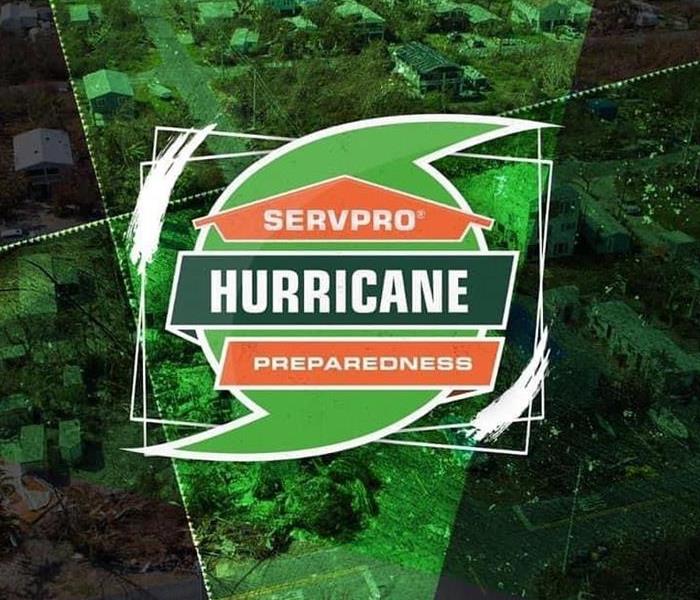 It's never too soon to prepare for hurricane season
It's never too soon to prepare for hurricane season
The Atlantic hurricane season officially starts June 1, 2024 and ends November 30, 2024.
Here is the chosen names for 2024 Atlantic Hurricanes:
- Alberto
- Beryl
- Chris
- Debby
- Ernesto
- Francine
- Gordon
- Helene
- Isaac
- Joyce
- Kirk
- Leslie
- Milton
- Nadine
- Oscar
- Patty
- Rafael
- Sara
- Tony
- Valarie
- William
Steps you can take to prepare
- Prepare an emergency bag
- Make a plan
- Stay informed
Some items you should have in your emergency bag:
- Bottled water: 1 gallon per person/pet per day for a minimum of 3 days
- Non-perishable food
- Manual can opener
- Extra set of car and house keys
- Cash (small bills)
- Copies of ATM/Credit Card
- Flashlight
- Battery-operated AM/FM radio
- Extra batteries
- Portable cell phone charger that is fully charged and extra cell phone charger cords
- First Aid Kit
- Toiletries
- Medications
- Notepad and Pen
- Whistle to call for help
- Lightweight Raingear and blankets
- Copies of your important documents in a waterproof container (e.g., insurance cards, Medicare/Medicaid cards, photo IDs, proof of address, marriage and birth certificates)
- Back-up medical equipment, if possible (e.g., oxygen, medication, scooter battery, hearing aids, mobility aids, glasses, facemasks, gloves)
For more information on how to be prepared, check out NYC’s My Emergency Plan
Be Prepared for 2023 Hurricane Season
8/24/2023 (Permalink)
The Atlantic hurricane season officially started June 1, 2023 and ends November 30, 2023.
Here is the chosen names for 2023 Atlantic Hurricanes:
- Arlene
- Bret
- Cindy
- Don
- Emily
- Franklin
- Gert
- Harold
- Idalia
- Jose
- Katia
- Lee
- Margot
- Nigel
- Ophelia
- Philippe
- Rina
- Sean
- Tammy
- Vince
- Whitney
Steps you can take to prepare
- Prepare an emergency bag
- Make a plan
- Stay informed
Some items you should have in your emergency bag:
- Bottled water: 1 gallon per person/pet per day for a minimum of 3 days
- Non-perishable food
- Manual can opener
- Extra set of car and house keys
- Cash (small bills)
- Copies of ATM/Credit Card
- Flashlight
- Battery-operated AM/FM radio
- Extra batteries
- Portable cell phone charger that is fully charged and extra cell phone charger cords
- First Aid Kit
- Toiletries
- Medications
- Notepad and Pen
- Whistle to call for help
- Lightweight Raingear and blankets
- Copies of your important documents in a waterproof container (e.g., insurance cards, Medicare/Medicaid cards, photo IDs, proof of address, marriage and birth certificates)
- Back-up medical equipment, if possible (e.g., oxygen, medication, scooter battery, hearing aids, mobility aids, glasses, facemasks, gloves)
For more information on how to be prepared, check out NYC’s My Emergency Plan
We're Here to Help When Storm Damage Strikes
8/6/2022 (Permalink)
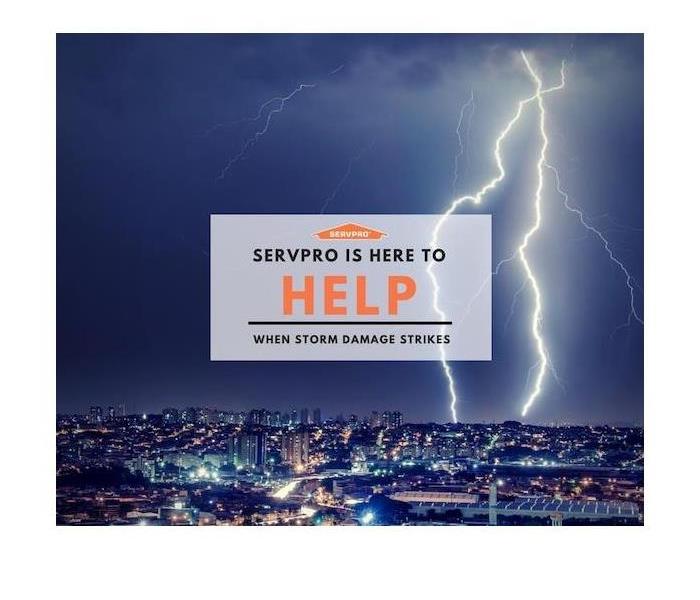 When Storm Damage Strikes
When Storm Damage Strikes
Every thunderstorm produces lightning, these storms can also produce powerful winds over 50 mph, hail, flooding and even tornado's. According to the National Weather Service, the Empire State Building is hit by lightning an average of 25 times per year. Lightning is one of the leading causes of injury and death caused by severe weather.
It is very important to take all thunderstorms seriously and always take the proper precautions to protect yourself and your human and canine loved ones.
Know the terms
- Severe thunderstorm watch: Conditions are favorable for the development of severe thunderstorms in and close to the watch area.
- Severe Thunderstorm Warning: Issued when a thunderstorm produces hail 3/4 of an inch or larger in diameter and/or winds which equal or exceed 58 mph.
Stay tuned to updates from the National Weather Service on local stations. At the first sound of thunder, head indoors. No place outdoors is safe when a thunderstorm is nearby. When you're indoors, wait a minimum of 30 mins after you hear the last sound of thunder before going back outside. While indoors, you should avoid using plugged-in electronics and plumbing if possible. Water can conduct electricity, which is why it is dangerous to use plumbing during a thunderstorm. Also, remember to stay away from windows during the storm. If you are unable to get indoors when a storm is approaching, the safest place to be is in a car. Do not lean against concrete walls, or lay down on concrete. Avoid large structures which are considered lightning rods during a thunderstorm. Avoid contact with metal which would include, bicycles and motorcycles. If you driving when a thunderstorm hits, pull over remain in your vehicle until the storm passes.
After the storm is over, avoid areas that are damaged from the storm. Never drive through roadways that are flooded. Stay away from all downed power lines and report them immediately. Doing so will help officials restore power to the area as soon as possible. Stay indoors if the damage is severe and be sure to keep an eye on small children and pets.
Floods and storms don’t wait for normal business hours, and neither do we. You can depend on an immediate response from our highly trained technicians, who are available 24 hours, seven days a week. If you need help with storm cleanup, call us. (917) 924-2260
We Specialize in Storm Damage Restoration
8/2/2022 (Permalink)
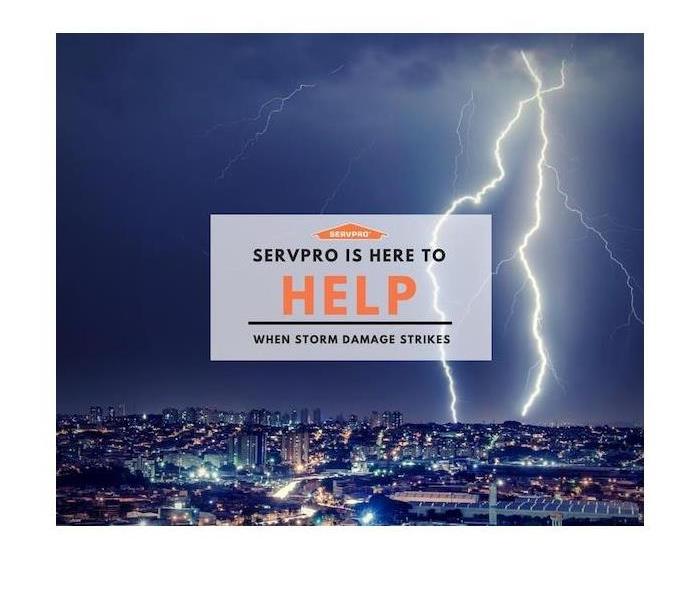 When Storm Damage Strikes, Call us
When Storm Damage Strikes, Call us
SERVPRO of Upper East Side specializes in storm and flood damage restoration. Our crews are highly trained and we use specialized equipment to restore your property to its pre-storm condition.
Faster Response
Since we are locally owned and operated, we are able to respond quicker with the right resources, which is extremely important. A fast response lessens the damage, limits further damage, and reduces the restoration cost.
Resources to Handle Floods and Storms
When storms hit, we have the resources to handle a large storm or flooding disaster. We can access equipment and personnel from a network of over 1,700 Franchises in the United States and Canada and elite Disaster Recovery Teams that are strategically located throughout the United States.
Have Storm or Flood Damage? Call Us Today, SERVPRO of Upper East Side 917-924-2260
Pet Heat Safety
8/1/2022 (Permalink)
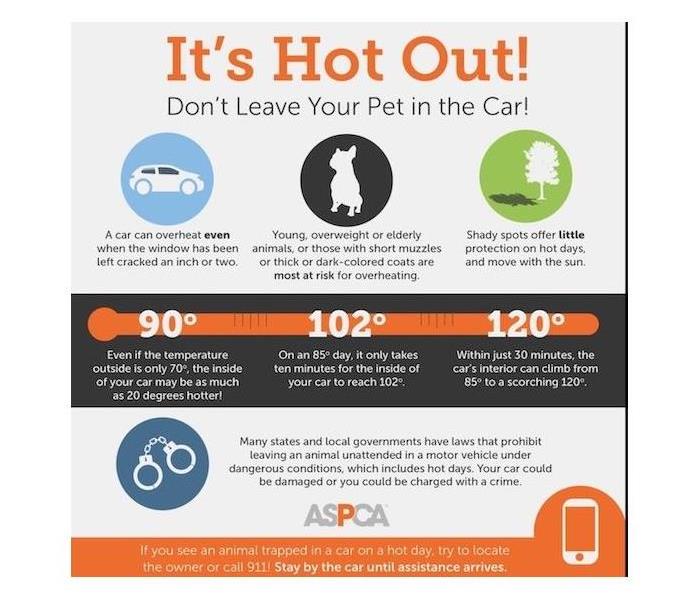 Don't Leave Your Pet in the Car
Don't Leave Your Pet in the Car
During this time of year, pet owners take their pets to the park and take longer walks with their pets. Spending more time outdoors when temperatures are hot, does pose higher risks for your pets. Veterinarians report an increase in injuries, ear infections, skin issues and heat stroke in pets this time of year. Pets don't sweat the way we do, so they can easily become overheated.
Here are some tips to prevent your pet from becoming overheated:
- If your pet shows signs of heat exhaustion, bring them to a cool shady spot. If you are near your home, bring them inside to a cooled room or put them near a fan and give them fresh cool water. Put a damp towel over their body and take them to the vets office asap. Do not immerse your pet in cold water, it can cause them to go into shock.
- Never leave your pet in a car. Although most pets enjoy riding in cars, it is never a good idea to take them with you if your intentions are to leave them in the car, even if it is only for a few minutes. Most people think opening windows are enough to keep a pet safe, but during warmer months your pet can die in a short amount of time if left in the car. In less than 10 mins, your pet can develop heat stroke inside a hot car. It is also against the law in New York State to leave a pet inside a hot car. If you ever see an animal alone inside a vehicle, notify law enforcement immediately.
- You can also apply sunscreen to pets. Like humans, they can get sunburn too. Never use sunscreen unless it's approved for use on pets. Apply every 3-4 hours while your pets are outdoors. Apply to spots with little or no hair, such as bellies, ears and nose.
- Do not shave your pet. People tend to think shaving their pets hair keeps them cooler, when actually your pets coat is designed to keep them cool. You can trim their coat, but never shave it all off. Be sure to leave at least 1" to prevent sunburn.
- Don't walk your pet in the heat of the day. Early morning and late evening are the best times.
- Keep your pets paws cool. Protect your pets paws on hot surfaces such as cement and asphalt. Also remember metal gets very hot in the sun, so be careful of any metal in your car or truck.
- Never let your pet ride in the back of truck, it is unsafe and they could get seriously injured or die.
- Be sure to use proper protection against parasites.
- If you take your pet out on the water, be sure they are wearing a pet approved life vest.
- Keep fireworks away from pets. Fireworks are made with chemicals that are poisonous to pets if eaten. Be sure to clean up any fireworks in your yard before letting your pets outside. Most pets are very afraid of the loud sounds from fireworks and they will try to escape from fear. Be sure to place them in a safe place with plenty of fresh water and a comfortable bed. You can also purchase a Thunder Jacket which helps pets that suffer from anxiety for any reason. Another thing you can do is ask your vet to prescribe an anti-anxiety medicine, for you to have on hand for times your pet is suffering from anxiety.
- Thunderstorms can cause some dogs to become very anxious, which often leads to severe anxiety. The thunder is not the only thing that negatively affects pets, the barometric pressure and build up of static electricity in the air makes pets uncomfortable. This buildup occurs before an impending storm, which is why some pets will display signs of nervousness even before the first sound of thunder. Not all dogs are scared, but the ones that are will display signs that they are scared such as, shivering, whimpering, hiding and constant movement as if they are trying to escape. Your pets anxiety must be handled, or it can turn into a phobia. Signs include panicked and destructive behavior, such as soiling on carpeting or destroying furniture. Make sure all doors and windows are tightly closed so your pet can not escape.
Some things you can do to calm your pet during a thunderstorm
- Bring your pet into a room with no doors to outside and no windows, this can help reduce the static electricity.
- Put a thunder jacket on your pet, they reduce anxiety and stress in your pet.
- Ask your veterinarians office if they can prescribe an anti-anxiety medication, be sure to fill it and have it on hand ahead of time.
The difference between flash flood watch and a warning
9/24/2018 (Permalink)
What's the Difference Between a Flash Flood Watch and Warning?
Tornadoes, lightning, hurricanes — all forms of severe weather can be deadly if proper safety precautions aren't taken. Flash floods are particularly threatening, and besides heat-related deaths, they cause more fatalities each year than any other climate hazard.
If you live in a region where flash floods are common, stay safe by learning the difference between a flood watch and warning, as well as what to do when a flash flood is likely to occur.
It's a Matter of Degrees, but Both Situations are Cause for Concern
It's important to understand the difference between a flash flood warning and flash flood watch. It's also important to know that the definitions of these two alerts differ from the definitions of warnings and watches given for other severe-weather conditions, such as hurricanes. And you definitely shouldn't assume you know the difference between watch and warning just because you're are familiar with winter storms.
Definitions
- A flash flood watch is issued first. It means that current weather conditions are favorable for flooding. While a watch does not a guarantee that a flash flood will occur, it is a very good indication that your community will experience severe weather.
- A flash flood warning means a flash flood is either imminent or occurring. In fact, a flash flood can occur so quickly that there isn't time to send out a flood warning alert.
What Should I Do in a Flash Flood?
Most flash-flood fatalities occur because people either underestimate the power of fast-moving water or they are not prepared for an emergency situation. Follow these six tips before and during a flash flood to keep your family safe during severe weather.
- Have an emergency plan and kit ready to go. If you're forced to evacuate, you need to know where to go. Learn the highways that are safe to travel during a flood and which roads are likely to collect water. It's good to have an escape plan formed before imminent danger so you can quickly reach safe territory during flood conditions. Also, prepare and store an easily accessible emergency kit, packed with essentials like flashlights and a phone charger for your car.
- Stay up to date on weather forecasts. If you have a mobile device, you're likely to receive a Wireless Emergency Alert (WEA) during flash-flood conditions. It's still a good idea to be aware of possible of severe weather before these alerts are sent out. The more notice you have, the better prepared you can be for weather hazards.
- Don't wait until a warning to take action. As soon as you know a flash flood is likely to occur, take action. Depending on where you live, this might mean evacuating to safer territory – just disconnect utilities and appliances first. It might also mean getting off the road and finding higher ground.
- Follow evacuation orders immediately. You don't have to wait for orders to evacuate, but once these orders are given, you should follow them immediately.
- Move to the highest point possible and call 911 for help. If it's too late to evacuate your home, move your family to the attic or highest point possible and call 911 for help.
- Do not drive or walk near flooded areas. Over half of flood-related deaths occur when people drive their vehicles into flood water. The next highest percentage of drownings are caused when individuals try walking into or near flood waters, according to the Center for Diesease Control and Prevention . It only takes six inches of fast-moving water to knock over most adults and 12 inches of fast-moving water to carry away smaller vehicles. Never try to walk or drive through a flooded area. Turn around – don't drown!
Safety Tips during Thunderstorms
9/22/2018 (Permalink)
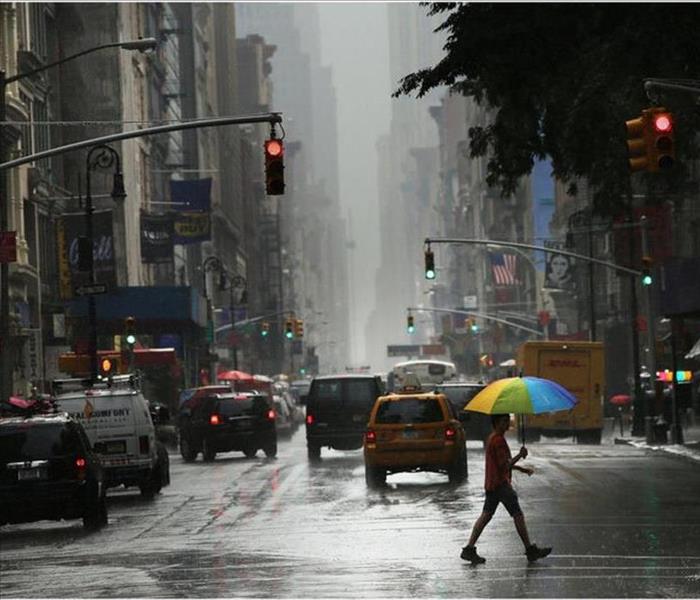 Always be Safe
Always be Safe
How to stay safe indoors during a thunderstorm:
During an electrical storm, avoid:
- Avoid using a land line phone. Land line-base lightning strikes are the leading cause of indoor lightning injuries in the United States.
- Avoid having any contact with appliances connected to your plumbing, because it is typically tied to your home's electrical service for grounding.
- Avoid all contact with you home's plumbing, including the shower, bath, and sinks during an electrical storm.
- Avoid all windows and doors or standing outside on porches.
How to stay safe outside in a thunderstorm:
- Find shelter immediately in a substantial and enclosed building or a metal-topped vehicle, convertibles do not provide protection.
- If you can hear thunder, you are close enough to be struck.
- Get away from isolated trees.
- Climb down and away from hilltops and other elevated areas.
- Stay away from objects and things that conduct electricity such as metal fences, power lines, or phone poles.
- Never lie flat in a field. You can still be hit through a ground-current strike.
Flood Season Is Here
9/22/2018 (Permalink)
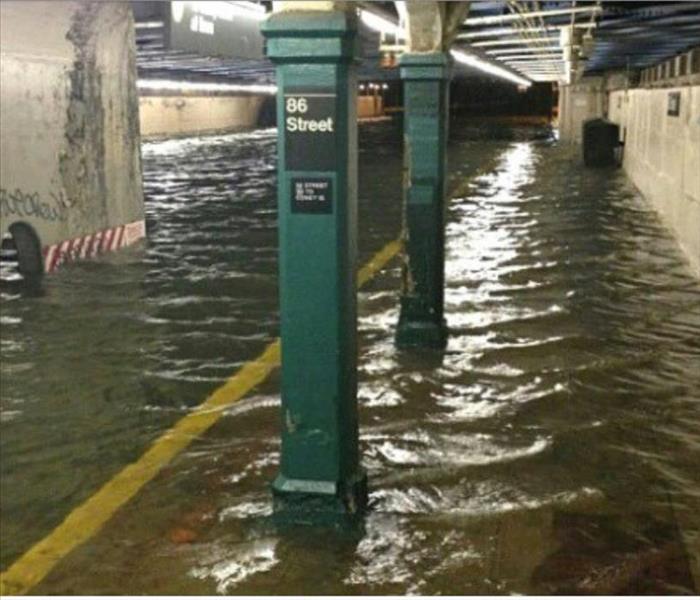 High Tides
High Tides
Preparing for Floods
Water can be a nightmarish foe. Inside your home, less than one inch of standing water can cause thousands of dollars in damage by destroying wood-products and sheet rock, and providing an environment for mold. Outside in motion, water is incredibly powerful. One cubic yard weighs over 1,700 pounds. A mere 6 inches (that's 31.21 pounds) of water can knock an adult off their feet. Flood waters can plow through earthen dams, pull homes off their foundations and destroy them, sweep cars swiftly downstream, knock out power lines, and contaminate drinking water for weeks. Floods are the number one widespread natural disaster in the US and they often happen due to heavy rain fall from multiple storms or hurricanes.
What is a flash flood?
A flash flood occurs when powerful storms drop several inches of rain in one hour, the ground will not be able to absorb water fast enough. This produces heavy runoff that can quickly flood low-lying areas in less than 6 hours. Just one inch of rain over one acre of land can produce 27,154 gallons. That's over 100 tons of water suddenly on the move, carrying mud, boulders, and other debris. Flash flooding in urbanized and other paved areas can produce extreme flooding quickly, turning highway underpasses, underground parking third highest weather-related killer in the US.
How to keep safe during a flood:
Listen to the news and weather reports. NOAA Weather Radio All Hazards (NWR) broadcasts continuous weather information directly from the nearest National Weather Service office.
Listen for flood watches/warnings in your area. If your home is located in a flood plain or low-lying area prone to flooding, consider packing an emergency supply kit and personal items and evacuating to higher ground.
Protect your possessions and gather records:
- Copies of insurance policies with you agent's contact information
- Document and take photos of all household items and valuables.
- Copies of social security cards, passports, finance records and receipts of major purchases.
If your area is flooding or is flooded, stay out of flood waters as much as possible.
- Eating or drinking anything contaminated by flood water can cause diarrhoeal disease.
- Open wounds and rashes exposed to flood waters can become infected.
- Flood waters can displace animals and reptiles, including dangerous snakes.





 24/7 Emergency Service
24/7 Emergency Service

